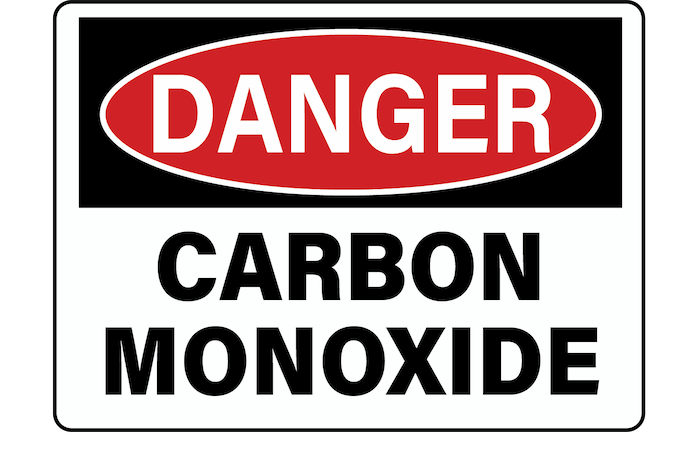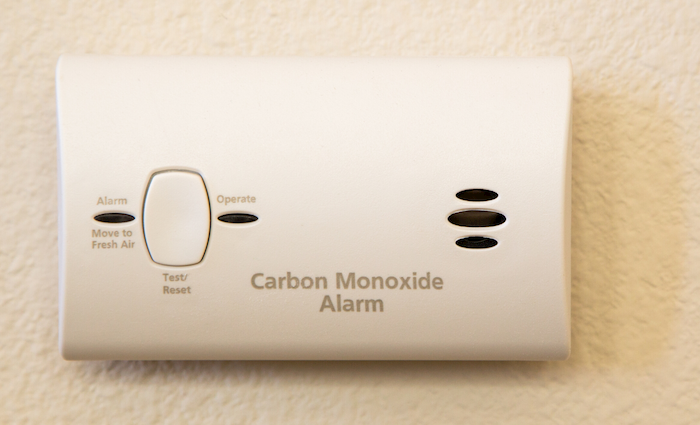Safety inspections or mock OSHA inspections reveal many overlooked hazards.
Company Information
A warehouse with 100 employees that works with steel pipe uses tools and equipment such as a press, punch, plasma cutter, grinders, welders, and power tools. The warehouse has no air conditioning in the summer or heat in the winter. It was the dead of winter and I walked by an isle and felt a welcoming warmth. The warmth came from a salamander or bullet heaters. Electrical salamanders are great in this situation, but these were not electric, they were fueled by diesel. Diesel or gasoline operated tools are not designed for inside use. Carbon monoxide is a product of incomplete combustion and is deadly.
Carbon Monoxide (CO) is a common industrial hazard. This heater in the workplace was an exposure risk for everyone working in this facility.

Carbon monoxide (CO) is a colorless, odorless and tasteless gas that is also highly poisonous. Although it has no detectable odor, CO is often mixed with other gasses that do have an odor. So, you can inhale carbon monoxide right along with gasses that you can smell and not even know that CO is present.
Carbon monoxide is harmful when breathed because it displaces oxygen in the blood and deprives the heart, brain and other vital organs of oxygen. Large amounts of CO can overcome you in minutes without warning, causing you to lose consciousness and suffocate.
Severe carbon monoxide poisoning causes neurological damage, illness, coma and death.
Understanding Carbon Monoxide (CO) Sources in the Workplace
- Portable generators and generators in buildings
- Concrete cutting saws
- Compressors
- Power trowels
- Floor buffers
- Space heaters
- Welding
- Gasoline powered tools and pumps
Recognizing the Signs and Symptoms of CO Poisoning
Tightness across the chest, headache, fatigue, dizziness, drowsiness, or nausea are signs and symptoms associated with CO. Sudden chest pain may occur in people with angina. During prolonged or high exposures, symptoms may worsen and include vomiting, confusion and collapse in addition to loss of consciousness and muscle weakness. Symptoms can vary widely from person to person.
CO poisoning may occur sooner in those most susceptible: young children, the elderly, people with lung or heart disease, people at high altitudes, or those who already have elevated CO blood levels, such as smokers.
CO poisoning can be reversed, but if you recover acute poisoning may result in permanent damage to the parts of your body that require a lot of oxygen such as the heart and brain. Significant reproductive risk is also linked to CO.
High-Risk Workplaces for Carbon Monoxide Exposure
You may be exposed to harmful levels of CO in boiler rooms, warehouses, petroleum refineries, pulp and paper production, and steel production; around docks, blast furnaces, or coke ovens; or in one of the following occupations:
- Welders
- Garage mechanics
- Firefighters
- Diesel engine Operator
- Forklift Operator
- Marine terminal worker
- Toll booth or tunnel attendant
- Customs Inspector
- Police Officer
- Taxi driver
Immediate Action Steps for CO Poisoning Prevention
When you suspect CO poisoning, promptly taking the following actions can save lives:
- Move the victim immediately to fresh air in an open area.
- Call 911 or another local emergency number for medical attention or assistance
- Administer 100 percent oxygen using a tight-fitting mask if the victim is breathing
- Administer cardiopulmonary resuscitation (CPR) if the victim has stopped breathing
Safety Measures for Rescuers in CO Incidents
You may be exposed to fatal levels of CO poisoning in a rescue attempt. Rescuers should be skilled at performing recovery operations and using recovery equipment. Employers should make sure that rescuers are not exposed to dangerous CO levels when performing rescue operations.
Respirators for CO Exposure: Personal Protective Equipment
Use a full-facepiece pressure-demand self-contained breathing apparatus (SCBA) certified by the National Institute for Occupational Safety and Health (NIOSH), or a combination full-facepiece pressure demand supplied-air respirator with auxiliary self-contained air supply in areas with high CO concentrations, i.e., atmospheres that are immediately dangerous to life and health (IDLH)..
Use respirators with appropriate canisters, in conjunction with personal CO monitoring, for short periods under certain circumstances where CO levels are not exceedingly high.
Preventing Carbon Monoxide Poisoning in the Workplace
To reduce the chances of CO poisoning in the workplace, employers should take the following actions:
- Test air regularly in areas where CO may be present, including confined spaces.
- Never use a generator indoors or in enclosed or partially enclosed spaces such as garages, crawl spaces and basements.
- Opening windows and doors in an enclosed space may prevent CO buildup.
- Make sure the generator has 3-4 feet of clear space on all sides and above it to ensure adequate ventilation.
- Do not use a generator outdoors if placed near doors, windows or vents which could allow CO to enter and build up in occupied spaces.
- Install an effective ventilation system that will remove CO from workers breathing zones.
- Maintain equipment and appliances (e.g., water heaters, space heaters, cooking ranges) that can produce CO in good working order to promote their safe operation.
- Consider switching from gasoline-powered equipment to equipment powered by electricity, batteries, or compressed air if it can be used safely.
- Prohibit the use of gasoline-powered engines or tools indoors or poorly ventilated areas.
- Provide personal CO monitors with audible alarms if potential exposure to CO exists.
- When using space heaters and stoves ensure that they are in good working order to reduce CO buildup, and never use in enclosed spaces or indoors.
- Consider using tools powered by electricity or compressed air.
Employee Training for CO Safety
Educate workers about the sources and conditions that may result in CO poisoning as well as the symptoms and controls required to eliminate CO exposure.
Employees should do the following to reduce the chances of CO poisoning in the workplace:
- Report any situation to your employer that might cause CO to accumulate.
- Be alert to ventilation problems — especially in enclosed areas where gasses of burning fuels may be released.
- Promptly report complaints of dizziness, drowsiness, or nausea.
- Avoid overexertion if you suspect CO poisoning and leave the contaminated area.
- Tell your doctor that you may have been exposed to CO if you get sick.
- Avoid the use of gas-powered engines, such as those in powered washers as well as heaters and forklifts, while working in enclosed spaces.
Permissible Exposure Limits for Carbon Monoxide at Work
The OSHA PEL for CO is 50 parts per million (ppm). OSHA standards prohibit worker exposure to more than 50 parts of CO gas per million parts of air averaged during an 8-hour time period.

Don’t let this silent killer get you at work or at home. Install a carbon monoxide detector.
Thank you to OSHA.gov for information contributing to this article.



